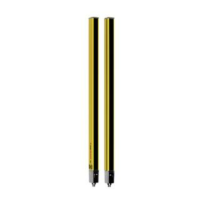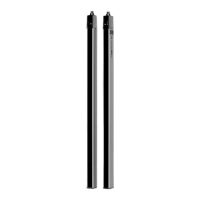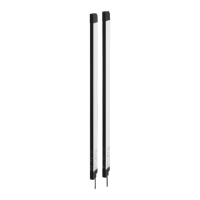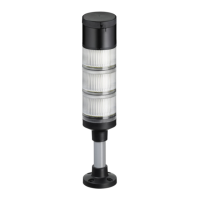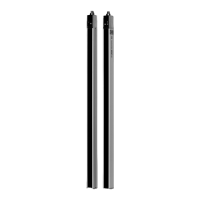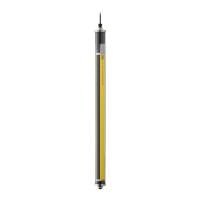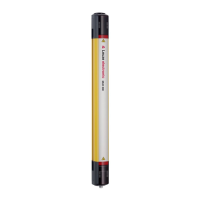What to do if ambient temperature is too high for Leuze electronic MLC 500 Lighting Equipment?
- GgomezemilySep 10, 2025
If the ambient temperature is too high for your Leuze electronic Lighting Equipment, ensure correct environmental conditions.
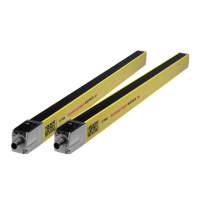
What to do if ambient temperature is too high for Leuze electronic MLC 500 Lighting Equipment?
If the ambient temperature is too high for your Leuze electronic Lighting Equipment, ensure correct environmental conditions.
Why is the signal weak on my Leuze electronic Lighting Equipment?
If your Leuze electronic Lighting Equipment has a weak signal, it might be due to contamination or poor alignment. Clean the front screens of the device and then check the alignment of the transmitter and receiver.
How to troubleshoot transmitter without supply voltage in Leuze electronic Lighting Equipment?
If the transmitter of your Leuze electronic Lighting Equipment lacks supply voltage, check the power supply unit and the electrical connection. If necessary, replace the power supply unit.
How to replace failed Leuze electronic Lighting Equipment receiver?
If your Leuze electronic Lighting Equipment receiver has failed, replace the device.
What to do if ambient temperature is too low for Leuze electronic Lighting Equipment?
If the ambient temperature is too low for your Leuze electronic Lighting Equipment, ensure correct environmental conditions.
What to do if restart interlock operating mode changed during operation of Leuze electronic Lighting Equipment?
If the restart interlock operating mode changed during operation of your Leuze electronic Lighting Equipment, check the correctness of the selected operating mode, correct the operating mode if required, and restart.
How to fix short circuit against GND at OSSD1 on Leuze electronic MLC 500 Lighting Equipment?
If there is a short circuit against GND at OSSD1 in your Leuze electronic Lighting Equipment, check the wiring and exchange the cable if applicable.
How to fix short circuit against +24 V at OSSD1 on Leuze electronic Lighting Equipment?
If there is a short circuit against +24 V at OSSD1 in your Leuze electronic Lighting Equipment, check the wiring and exchange the cable if applicable.
What to do if Leuze electronic Lighting Equipment shows internal error?
If your Leuze electronic Lighting Equipment shows an internal error, and a restart fails, replace the device.
What to do if reset button actuation duration exceeded on Leuze electronic Lighting Equipment?
If the actuation duration (2.5 min) has been exceeded for the reset button or the cable is short-circuited on your Leuze electronic Lighting Equipment, press the reset button. If the restart is unsuccessful, check the wiring of the reset button.
| Brand | Leuze electronic |
|---|---|
| Model | MLC 500 |
| Category | Lighting Equipment |
| Language | English |
Explains warning symbols, signal words, and other symbols used.
References checklists for machine manufacturer or supplier testing requirements.
Details the correct application and potential improper uses of the safety sensor.
Specifies the qualifications required for personnel handling the safety sensor.
Defines responsibilities of manufacturers and operators for safe operation.
Provides an overview of the MLC family and explains device synchronization.
Details connector types and how to cascade multiple safety light curtains.
Describes LEDs and 7-segment displays for status and fault indication.
Explains the function of the start/restart interlock for safe system operation.
Details the EDM function for monitoring downstream contactors.
Covers changing transmission channels and selecting the operating range.
Describes guarding the point of operation for hand and finger protection.
Explains using safety sensors for access guarding into danger zones.
Details the use of safety light curtains for danger zone guarding.
Covers transmitter/receiver arrangement and calculation of safety distance S.
Details safety distance calculations for orthogonal and parallel approaches.
Addresses minimum distances to reflective surfaces and preventing device interference.
Covers mounting steps, locations, fastening, and accessories like protective screens.
Provides pin assignments for transmitter/receiver and example circuit diagrams.
Details initial power-on, self-test, and basic sensor alignment procedures.
Explains alignment of deflecting mirrors using a laser alignment aid.
Describes the procedure to unlock the start/restart interlock after interruptions.
Covers checks required before initial operation or after modifications.
Outlines periodic testing requirements for competent persons and operators.
Guides users on diagnosing and resolving faults using display and LED information.
Presents key safety-relevant and general system specifications.
Provides physical dimensions, weight, and response time data.
Includes detailed drawings for various mounting accessories.
Explains product part designation structure and lists part numbers.
